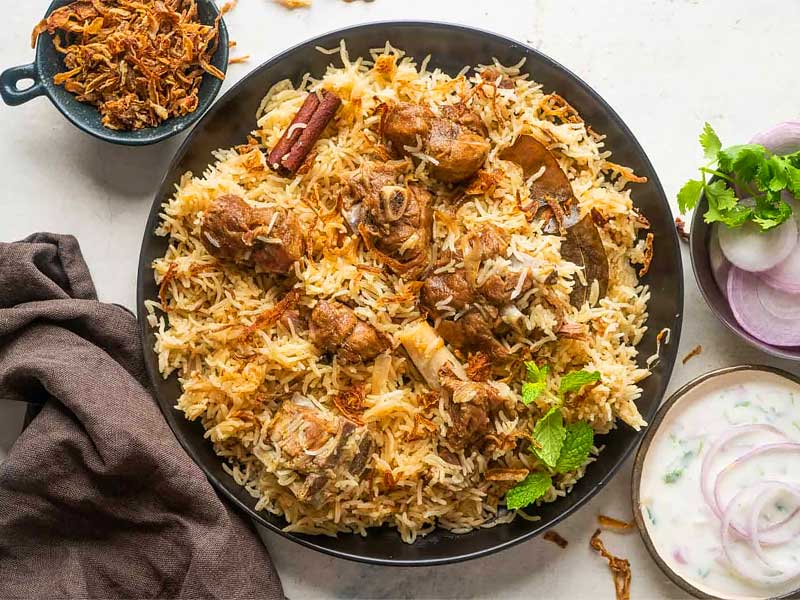Indian food habits and cuisine have been greatly influenced by the Mughal (or Muslim) invaders, particularly in the north of the country. It appears that Yakhni Pulao originated in Persia and was brought to us Indians by the Mughal emperors.

Yakhni is essentially a mutton broth made with yoghurt and saffron. The mutton and aromatics, or whole garam masala tied in a bouquet garni, are used to make the broth or stock. The key ingredient in this pulao or pilaf is aromatic spices. These are mostly dried ginger powder, cloves, cinnamon, fennel seeds, and green and black cardamom. Another ingredient that’s essential to balancing all these flavours and giving this pulao its distinct flavour is yoghurt.
Also read: 5 Most Unhealthy Edibles You Should Avoid
Nevertheless, there are variants such as chicken yakhni, vegetable kofta yakhni, mutton kofta yakhni, and even paneer yakhni, or Indian cottage cheese. A cool raita is frequently served with pulao to counterbalance the heat from the spices. Although Pakistanis and Afghanis also claim credit for yoghni, which is understandable given that Pakistan was a part of India prior to partition and that Afghanistan served as both the entry point for Mughal invaders and an outpost for the Mughal empire, yoghni is an essential component of Kashmiri cuisine in India.

Don’t confuse this pulao with the biryani. In technical terms, biryanis are made of rice that has been cooked separately, layered, and cooked on a dum. To retain all of the steam and meat flavours inside the pot during dum cooking, the lid of the pot containing the layers of rice and meat is sealed with dough around the rim. The outcome is a fragrant biryani. The meat and rice in biryani are also more strongly flavoured.
The ingredients for this flavorful and delicate pulao are alot. Don’t let their quantity or number intimidate you. The majority of them will be used in the bouquet garni, which is made by encasing all the ingredients in cheesecloth, tying the knot at the top, and then placing the whole thing inside the cooking pot. As easy as that!

























